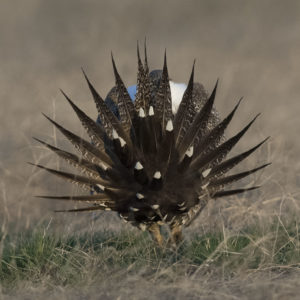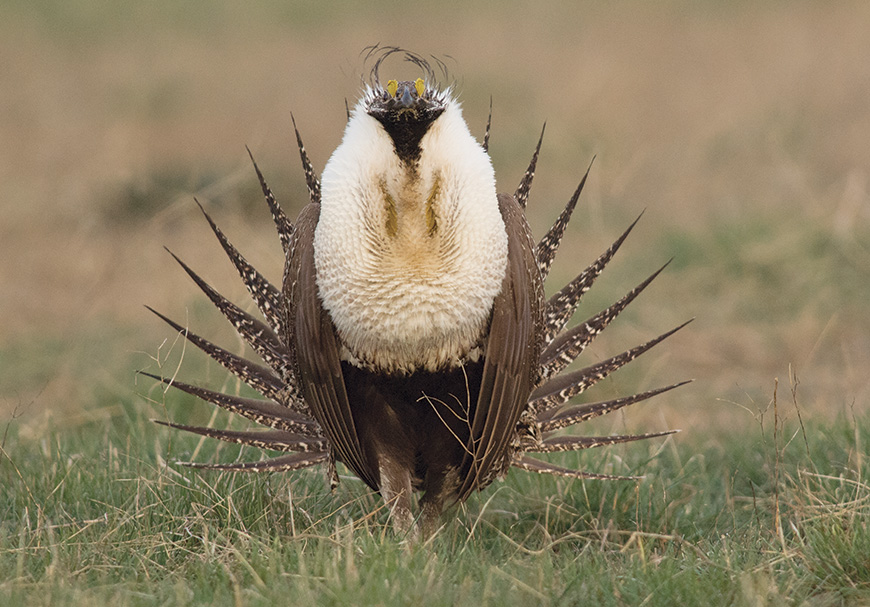In the mind’s eye, what does one see when envisioning the West? Peaks piercing an impossibly blue sky? The icy Pacific crashing into cliffs and sand?
The truth is the West really begins less gloriously as soon as one crosses over the 100th meridian. Everything changes there—the weather, the land, even those living on it seem a little different. Things open up, the sky expands, and there is hardly an end anywhere in sight.
So much of the vast expanse beginning in the Dakotas, what some refer to as “The Big Empty,” is anything but that. Some 186 million acres of sagebrush grassland unfold across 11 states. This is the Sagebrush Sea, home to 350 wildlife species, including mule deer, elk, pronghorn, and golden eagles. Perhaps the showiest of all creatures scraping out a life in this harsh environment is the greater sage grouse.
Once numbering 16 million, the greater sage grouse are thought to have dwindled to 200,000 or fewer. This population decline is particularly significant because the bird is an “indicator” species: a species that reflects the broader health of its environment. Gold mining, natural gas drilling, and other industrial concerns have had their effects on the sage grouse’s habitat.
decline is particularly significant because the bird is an “indicator” species: a species that reflects the broader health of its environment. Gold mining, natural gas drilling, and other industrial concerns have had their effects on the sage grouse’s habitat.
What hasn’t changed is the pomp and circumstance with which the sage grouse carry out their spring mating ritual. With the females hovering nearby, males strut into clearings of the sagebrush called leks. They dance about, display fans of pointed tail feathers, and puff out bizarrely large chests festooned with white feathers. Filling yellowish air sacks in their chests, the males create a muted version of a Champagne cork popping. It is a statement of dominance that is invariably challenged by other males. Any given grouse might endure dozens of battles in a day.
With a still somewhat mysterious calculus, females choose their particular betrothed and retreat to the sagebrush. Twenty-five to 27 days later, thousands of young sage grouse chicks begin a life in the West. It is a life peppered with danger—golden eagles and ravens above, coyotes, badgers, and bobcats on the plains. Still, it is a life resplendent with food, vast space, and the promise one day of a fabulous Western dance on a truly grand stage.


